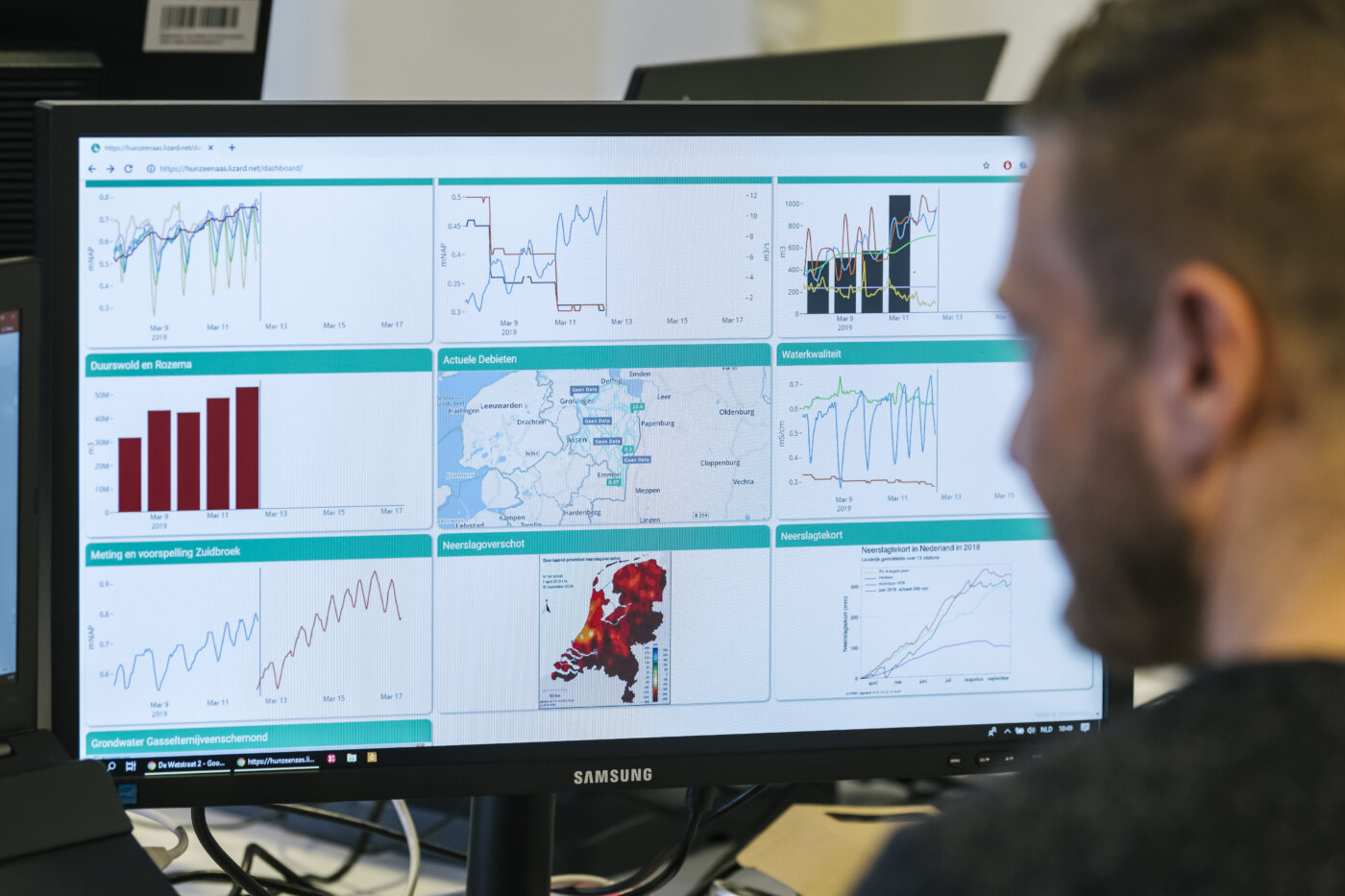3Di in an operational system
The water Authority of North Holland (HHNK) has the ambition to be climate neutral in 2025. In addition, HHNK is committed to sustainable production and energy conservation, and wants to prevent grid congestion. Several options are available here. In a testing ground on the island of Texel, a start has been made on the construction of a solar park and a battery with the aim of being energy neutral by 2020.
The challenge
The energy balance is balanced on an annual basis, but HHNK does not expect this to be the case on a daily basis. The sun does not shine 24 hours a day, while at the same time electricity is consumed throughout the day. To bridge the gap, a battery has also been installed to temporarily store energy and take it off when demand exceeds supply. Both the demand and the supply of electricity can be controlled, and this raises the question: how can the available flexibility be optimally used?
Our solution

The water chain and the water system are modeled using 3Di. The water system is regulated with the aid of sewage pumping stations, wastewater treatment plants, and surface water pumping stations. The use of these structures creates a demand for electricity and is determined by the (dirty) water load, which depends on many variables such as precipitation, evaporation, wastewater from residents and tourists, etc. The structures are controlled within the set limits and parameters. to safeguard the water management tasks. The flexibility in these limits and parameters makes it possible to operate as much as possible on self-generated solar energy.
The supply of electricity comes from the generation of the solar park and the discharging of the battery, with the remaining need being supplemented from the electricity grid. The generation from the solar park varies based on the amount of incoming radiation and the cloud cover. The amount of electricity generated is also uncontrollable. The installed battery (the size of a sea container) has a storage capacity of 200 kWh and can charge or discharge with 40 kW. When discharging, a loss of efficiency of 40% occurs.
The coordination in the energy balance within the boundaries of the water management tasks is a typical optimization problem. This problem can be solved with a multi-objective optimization method in which the optimal solution is sought within the set boundary conditions. The optimal solution is defined on the basis of a set of target functions and boundary conditions. This set is listed below where the target functions are solved sequentially.
- Maximum filling degree in sewer systems.
- The water level remains within the permitted limits of the polders.
- The water level ends at the target level at the end of the optimization.
- Minimal consumption of energy from the energy grid.
- Minimal battery discharge.
- Minimal battery charge.
The sequential approach always ensures that the main goal is met first before looking for a solution to an underlying goal. The goals related to the water management tasks have the highest priority. After that, space is sought to manage the use of self-generated energy within the remaining solution space. This optimization method is known as goal programming. The optimization problem for LOGiC has 15 control parameters over a time horizon of 2 days with a time step of one hour resulting in a huge number of possible outcomes (to be precise 1548). An optimization model can calculate the optimal solution from all these possible outcomes.
The result
A real-time control system, called LOGiC Texel, has been developed for the coordination between the energy demand and the supply of sustainable electricity. The LOGiC system considers the water and energy issue integrally and determines the optimal control of the objects on the basis of self-generated solar energy. The system uses the current insight from measurements, external information for precipitation and outside water levels, simulations of the water discharge with 3Di and control parameters. The LOGiC Texel system processes the information in real-time and automatically and uses an optimization scheme to arrive at a commitment for the artworks.
An optimization model has been built in RTC-Tools for this. RTC-Tools is an open-source toolbox developed by Deltares. This toolbox focuses on the management and optimization of controllable natural water systems specifically aimed at solving conflicting goals under uncertain future expectations. This makes this toolbox extremely suitable for the complex issue of conflicting goals with regard to energy consumption and the water management tasks of the water board. With the formulation of the target functions in the optimization model, the LOGiC zero-on-the-meter system goes within the limits of water management.
All cases